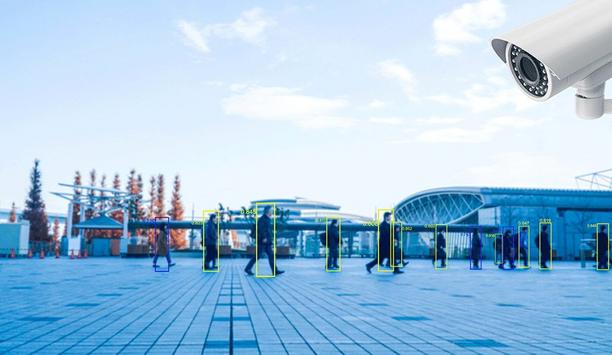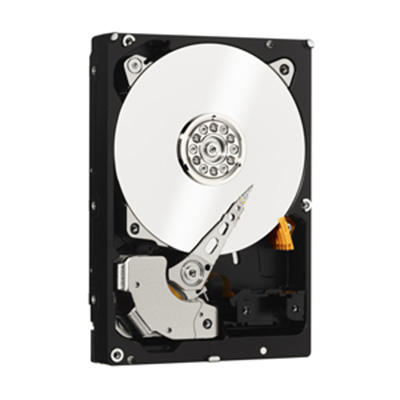Western Digital Corporation - Experts & Thought Leaders
Latest Western Digital Corporation news & announcements
Quantum Corporation announces it has completed its acquisition of the ActiveScale™ object storage business from Western Digital Technologies, Inc., a subsidiary of Western Digital Corp. The acquisition expands Quantum’s leadership role in storing and managing video and other unstructured data using a software-defined approach. Jamie Lerner, President and CEO, Quantum commented, “The strategic acquisition of ActiveScale bolsters our existing product portfolio and expands our addressable market providing critical software capabilities that enhance our go to market strategy with minimal risk to Quantum. With engineers who developed ActiveScale’s erasure-coded object store software now on our team, we are in a position to pursue new object solutions truly optimised for managing video and other unstructured data.” Erasure coding technology The ActiveScale product line adds object storage software and erasure coding technology to Quantum’s portfolio, enabling the company to expand its product offerings in the object storage market. Object storage has emerged as a potent response to the exponential growth of video and other forms of unstructured data. This content requires high-speed capture and processing (typically done with a file system like Quantum’s StorNext® solution), then is often retained for years or decades. Examples of this unstructured data include video and images for entertainment, surveillance and security, marketing and training, and more. Prior to this acquisition Quantum has successfully delivered and supported the ActiveScale object storage product line for over five years.
Quantum Corporation announced it has entered into an agreement with Western Digital Technologies, Inc., a subsidiary of Western Digital Corp., to acquire its ActiveScale object storage business. The addition of the ActiveScale product line and talent brings object storage software and erasure coding technology to Quantum’s portfolio, and enables the company to expand in the object storage market. The acquisition demonstrates Quantum’s commitment to innovation and growth, extending the company’s leadership role in storing and managing video and unstructured data using a software-defined approach. Quantum and Western Digital are committed to executing a smooth transition for customers and key stakeholders, with Quantum providing post-closing continued support for ActiveScale products and a strong commitment to invest in - and enhance - the ActiveScale product line. Key technologies for managing video Industries like advanced driver assistance systems are generating huge amounts of similar data The transaction is expected to close by March 31, 2020, subject to the satisfaction of customary closing conditions. Financial terms of the transaction were not disclosed. Quantum expects the initial financial impact of the transaction to be neutral to slightly accretive to current business operations and additional guidance will be provided with the release of the fiscal Q4 2020 financial results. Video and other forms of unstructured data are growing exponentially in every industry. IDC forecasts this type of data will represent over 80% of all the world’s data by 2022*. Examples of this unstructured data include video and images for entertainment, surveillance and security, marketing and training, and more. In addition, industries like genomics research, advanced driver assistance systems, geospatial exploration, and more are generating huge amounts of similar data. Hierarchical file system structure This content requires high-speed capture and processing (typically done with a file system like StorNext), then is generally retained for many years or decades. Object storage software has a number of attributes that make it particularly well-suited for a wide range of datasets: Massive Scalability: Store, manage and analyse billions of objects, and exabytes of capacity. Highly Durable and Available: ActiveScale object storage offers up to 19 nines of data durability using patented erasure coding protection technologies. Easy to Manage at Scale: Because object storage has a flat namespace (compared to a hierarchical file system structure) managing billions of objects and hundreds of petabytes o capacity is easier than using traditional network attached storage. This reduces operational expenses. Object storage software for active archives Quantum has a history of success delivering object storage and has been selling and supporting the ActiveScale product line for over five years. Object storage can be used as an active-archive tier of storage – where StorNext file storage is used for highest performance ingest and processing of data, object storage acts as lower cost online content repository, and tape acts as the lowest cost cold storage tier. In a diverse range of industries spanning media and entertainment, genomics and life sciences, autonomous vehicle research, and university research, ActiveScale can serve a number of use cases: Object storage in media production: Object storage is used as a long-term content repository for video content, in movie and TV production, in sports video, and even for large corporate video departments. Customers in movie and TV production require very high performance ingest, edit, processing, rendering of their video files, which typically is done with a file system like StorNext. Once content is finished, it is preserved in an object store, with StorNext data management handling the data movement between file and object tiers. Storage for video surveillance Object storage for enterprise archiving and long-term retention: As object storage has matured, all leading backup applications can now backup data to an object target, and enterprise IT departments are looking at object storage as a long-term content repository. Object storage for genomics and life sciences: Genomics sequencing and other life sciences research generates a massive amount of data, that must be processed and analysed quickly (typically with a clustered file system like StorNext), then archived on object storage. Object storage for video surveillance: Object storage is also used as a tier for multi-petabyte surveillance infrastructure. Video is typically captured and recorded on higher-performance servers, then archived on object storage. Certified third-party object stores As Quantum returns to a growth path, we will be evaluating strategic acquisitions that bolster our technology portfolio" To serve the needs of these use cases and others, Quantum StorNext is certified with many leading public and private object stores today. With the addition of the ActiveScale product line, Quantum will remain committed to maintaining an open ecosystem of certified third-party object stores, with StorNext providing the ability to move data to these third-party object tiers. “As Quantum returns to a growth path, we will be evaluating strategic acquisitions that bolster our technology portfolio,” says Jamie Lerner, President and CEO, Quantum. "Object storage software is an obvious fit with our strategy, our go-to-market focus, and within our technology portfolio. We are committed to the product, and to making ActiveScale customers successful, and we look forward to engaging with them to solve their most pressing business challenges around storing and managing unstructured data. Erasure-coded object store software “With the addition of the engineers and scientists that developed the erasure-coded object store software, we can deliver on a robust technical roadmap, including new solutions like an object store built on a combination of disk and tape." "With Quantum’s resources, technical expertise and focus on solving customers’ challenges with managing video and other unstructured data, we believe ActiveScale will enable new value for customers,” said Phil Bullinger, Senior Vice President and General Manager of Western Digital’s Data Center business. “Western Digital and Quantum are each committed to continuity of support for existing ActiveScale customers.”
Hikvision, the global supplier of innovative security products and solutions, will be exhibiting its latest innovations at Intersec 2019, the largest security exhibition in the Middle East, January 20th – 22nd in Dubai, UAE. “As the largest and most prestigious security surveillance industry exhibition in the Middle East and North Africa Regions, Intersec is an event where Hikvision mobilises significant resources every year to engage with customers and partners,” says Binson Xu, the regional president of Hikvision MENA. “The 2019 edition of Intersec marks the 10th year of Hikvision’s participation in this great event, a significant milestone for us.” Demonstrating AI powered solutions Hikvision Smart Retail Solution enables retailers to get an understanding of their business’s status using intelligent cameras, NVRs, and the VMS, HikCentralAt the booth, visitors can experience Hikvision’s market-leading products, solutions, and services across various industries and scenarios. There will be interactive areas for visitors to immerse themselves in an Artificial Intelligence experience and feel the power of AI technology. Hikvision will demonstrate AI industry solutions for vertical markets and applications. For example, Hikvision Smart Retail Solution enables retailers to get a clear understanding of their business’s status using intelligent cameras, NVRs, and the video management system, HikCentral. Visitors will also be able to see a sand box at the booth, demonstrating how Hikvision's Intelligent Traffic System (ITS) recognises vehicle license plates to manage roadway traffic and parking areas. Turnstile with face recognition terminal In addition, the booth will feature a building access control simulation with facial recognition technology. Visitors can pass through an access turnstile equipped with Hikvision’s face recognition terminal after registering at the reception. Meanwhile, a people-counting camera set above the crossbeam provides real-time monitoring, so visitors can experience this powerful technology first-hand. Hikvision will also showcase intelligent products, including AI-equipped Turbo HD 5.0 cameras, the Easy IP 4.0 Series with Hikvision’s AcuSense and ColorVu technologies and the DeepinView deep learning cameras. Hosting technology partners Visitors will be able to see a wide range of innovations and products for new Hikvision enterprises, such as smart home, industrial automationAt Intersec, Hikvision will host several technology partners at the booth, including AxxonSoft, Ela-soft, Milestone Systems, Nedap, Seagate, and Western Digital. Representatives of each of these partners will be available to talk with visitors about how their solutions integrate with and complement Hikvision products and technologies. Visitors will also be able to see a wide range of innovations and products for new Hikvision enterprises, such as smart home (under the EZVIZ brand), industrial automation (Hik Robotics), Automotive Electronics, Intelligent Data Storage, and more. Visit Hikvision at Booth SA-B12 to explore additional information and opportunities.
Insights & Opinions from thought leaders at Western Digital Corporation
The evolution of smart video technology continues at pace. As in many other industries, the onset of the COVID-19 pandemic expedited timelines and the artificial intelligence (AI) video world is continuing its rapid evolution in 2021. As video demand and the use of AI to make sense of the visual data increase, the number of cameras and subsequent data produced are growing rapidly, and these are forcing the creation of new edge architectures. Cameras and AI in traffic management ‘Smart factories’ can leverage AI to detect flaws or deviations in the production line in real time In addition, a new generation of ‘smart’ use cases has developed. For example, in ‘smart cities’, cameras and AI analyse traffic patterns and adjust traffic lights, in order to improve vehicle flow, reduce congestion and pollution, and increase pedestrian safety. ‘Smart factories’ can leverage AI to detect flaws or deviations in the production line in real time, adjusting to reduce errors and implement effective quality assurance measures. As a result, costs can be greatly reduced through automation and earlier fault detection. Evolution of smart video The evolution of smart video is also happening alongside other technological and data infrastructure advancements, such as 5G. As these technologies come together, they’re impacting how we architect the edge. And, they’re driving a demand for specialised storage. Listed below are some of the biggest trends that we’re seeing: Greater volume means greater quality The volume and variety of cameras continue to increase with each new advancement, bringing new capabilities. Having more cameras allow more to be seen and captured. This could mean having more coverage or more angles. It also means more real-time video can be captured and used to train AI. Quality also continues to improve with higher resolutions (4K video and above) Quality also continues to improve with higher resolutions (4K video and above). The more detailed the video, the more insights can be extracted from it. And, the more effective the AI algorithms can become. In addition, new cameras transmit not just one video stream, but also additional low-bitrate streams used for low-bandwidth monitoring and AI pattern matching. Smart cameras operate 24/7 Whether used for traffic management, security or manufacturing, many of these smart cameras operate 24/7, 365 days a year, which poses a unique challenge. Storage technology must be able to keep up. For one thing, storage has evolved to deliver high-performance data transfer speeds and data writing speeds, to ensure high quality video capture. And, actual on-camera storage technology must deliver longevity and reliability, critical to any workflow. Real world context is vital to understanding endpoints Whether used for business, in scientific research or in our personal lives, we’re seeing new types of cameras that can capture new types of data. With the potential benefits of utilising and analysing this data, the importance of reliable data storage has never been more apparent. Considering context when designing storage technology As we design storage technology, we must take the context into consideration, such as location and form factor. We need to think of the accessibility of cameras (or lack thereof), are they atop a tall building or maybe amid a remote jungle? Such locations might also need to withstand extreme temperature variations. All of these possibilities need to be taken into account, so as to ensure long-lasting, reliable continuous recording of critical video data. Chipsets are improving artificial intelligence (AI) capability Improved compute capabilities in cameras means processing happens at the device level, enabling real-time decisions at the edge. New camera chipsets deliver enhanced AI capability We’re seeing new chipsets arrive for cameras that deliver improved AI capability, and more advanced chipsets add deep neural network processing for on-camera deep learning analytics. AI keeps getting smarter and more capable. Cloud must support deep learning technology Just as camera and recorder chipsets are coming with more compute power, in today’s smart video solutions most of the video analytics and deep learning is still done with discrete video analytics appliances or in the Cloud. To support these new AI workloads, the Cloud has gone through some transformation. Neural network processors within the Cloud have adopted the use of massive GPU clusters or custom FPGAs. They’re being fed thousands of hours of training video, and petabytes of data. These workloads depend on the high-capacity capabilities of enterprise-class hard drives (HDDs), which can already support 20TB per drive and high-performance enterprise SSD flash devices, platforms or arrays. Reliance on the network Wired and wireless internet have enabled the scalability and ease of installation that has fuelled the explosive adoption of security cameras, but it could only do so where LAN and WAN infrastructures already exist. 5G technology aids camera installations Emerging cameras that are 5G-ready are being designed to load and run 3rd party applications 5G removes many barriers to deployment, allowing expansive options for placement and ease of installation of cameras at a metropolitan level. With this ease of deployment comes new greater scalability, which drives use cases and further advancements in both camera and cloud design. For example, cameras can now be standalone, with direct connectivity to a centralised cloud, as they’re no longer dependent on a local network. Emerging cameras that are 5G-ready are being designed to load and run 3rd party applications, which can bring broader capabilities. Yet with greater autonomy, these cameras will need even more dynamic storage. They will require new combinations of endurance, capacity, performance, and power efficiency, to be able to optimally handle the variability of new app-driven functions. Paving the way for the edge storage revolution It’s a brave new world for smart video, and it is as complex as it is exciting. Architectural changes are being made to handle new workloads and prepare for even more dynamic capabilities at the edge and at end points. At the same time, deep learning analytics continue to evolve at the back end and the Cloud. Understanding workload changes, whether at the camera, recorder, or the Cloud level, is critical to ensuring that new architectural changes are augmented by continuous innovation in storage technology.
Consolidation continued in the physical security marketplace in the turbulent year 2020. There were several mega-deals in addition to shuffling among small and medium-sized companies. Here is a sampling of M&A from this year, compiled from our archive of company news. With the changing economic climate, how much more is ahead in 2021? Stay tuned. Wesco merges with Anixter WESCO International, Inc., a provider of business-to-business (B2B) distribution, logistics services and supply chain solutions, announced it completed its merger with Anixter International Inc., creating a premier, global B2B distribution and supply chain solutions company. Anixter becomes a wholly owned subsidiary of WESCO International. ACRE acquires Razberi ACRE acquired Razberi Technologies, Farmers Branch, Texas, and the product line of intelligent video appliances, automated security software and health monitoring software will be added to and sold under the ComNet brand and portfolio of products. ComNet will now be selling Razberi products through its established channels. Motorola acquires IndigoVision Among the benefits is enhanced geographical reach across a wider customer base Motorola Solutions says the IndigoVision range of products, global presence and customer base are ‘highly complementary’ to Motorola Solutions' existing presence in video security. Among the benefits is enhanced geographical reach across a wider customer base. Motorola acquires Pelco “Pelco’s track record of innovation, internationally recognised brand, global channel and customer installed base enable us to further expand our global footprint with enterprise and public safety customers,” said Greg Brown, Motorola Solutions’ Chairman and CEO, about the iconic brand. Johnson Controls swallows Qolsys Qolsys Inc., residential and commercial security and smart-home manufacturer, enhances Johnson Controls global innovation platform, delivering next generation security and smart building solutions. JCI had already owned a majority stake in the company since 2014. ADT and Google Home partnership The partnership will combine Nest’s award-winning hardware and services, powered by Google’s machine learning technology, with ADT’s installation, service and professional monitoring network to create a more helpful smart home and integrated experience for customers across the United States. Upon the closing of Google’s equity investment in ADT, Google will own 6.6% of ADT’s outstanding aggregate common equity. Securitas acquires STANLEY in Five Countries The acquisition is aligned with Securitas’ ambition to double the size of its security solutions Securitas acquired STANLEY Security’s electronic security businesses in Germany, Portugal, Switzerland, Singapore and India. The acquisition is aligned with Securitas’ ambition to double the size of its security solutions and electronic security business and expands Securitas’ electronic security footprint and capabilities. Allied Universal to Buy G4S Ending the year on a high note, the boards of directors managing Allied Universal and G4S reached an agreement on the terms of a recommended cash offer. The deal brings to a close a six-month bidding war for G4S. The combined business is expected to generate approximately $18 billion in annual revenues with a global workforce of more than 750,000 people in 85 countries. Quantum acquires Western Digital business line Quantum Corporation entered into an agreement with Western Digital Technologies, Inc., a subsidiary of Western Digital Corp., to acquire its ActiveScale object storage business. The acquisition demonstrates Quantum’s commitment to innovation and growth, extending the company’s leadership role in storing and managing video and unstructured data using a software-defined approach. AVA/Vaion/Jazz Networks Ava, a unified security company, announced the completion of the merger between Jazz Networks, renowned cyber security insider threat detection and response firm; and Vaion, an end-to-end video security solutions provider. Ava is now positioned to deliver unified cyber and physical security solutions to organisations worldwide.
Smart security is advancing rapidly. As AI and 4K rise in adoption on smart video cameras, these higher video resolutions are driving the demand for more data to be stored on-camera. AI and smart video promise to extract greater insights from security video. Complex, extensive camera networks will already require a large amount of data storage, particularly if this is 24/7 monitoring from smart video-enabled devices. With 4K-compliant cameras projected to make up over 24% of all network cameras shipped by 2023 – there is a fast-growing desire for reliable storage on-board security cameras. The question for businesses is: do they look to break up their existing smart video network, by separating and compartmentalising cameras to handle data requirements, or do they increase its storage capabilities? As some people begin to venture out and return to work following initial COVID-19 measures, we are also seeing demand for thermal imaging technology increase. New technology like this combined with more of these always-on systems being rolled out, means organisations will need to carefully consider their smart video strategy. Newer edge computing will play an important role in capturing, collecting, and analysing data and there are some key trends you can expect to see as a result of this evolution. There are many more types of cameras being used today, such as body cameras, dashboard cameras, and new Internet of Things (IoT) devices and sensors. Video data is so rich nowadays, you can analyse it and deduce a lot of valuable information in real-time, instead of post-event. Edge computing and smart security As public cloud adoption grew, companies and organisations saw the platform as a centralised location for big data. However, recently there’s been opposition to that trend. Instead we are now seeing data processed at the edge, rather than in the cloud. There is one main reason for this change in preference: latency. Newer edge computing will play an important role in capturing, collecting, and analysing data Latency is an important consideration when trying to carry out real-time pattern recognition. It’s very difficult for cameras to process data – 4K surveillance video recorded 24/7 – if it has to go back to a centralised data centre hundreds of miles away. This data analysis needs to happen quickly in order to be timely and applicable to dynamic situations, such as public safety. By storing relevant data at the edge, AI inferencing can happen much faster. Doing so can lead to safer communities, more effective operations, and smarter infrastructure. UHD and storage AI-enabled applications and capabilities, such as pattern recognition, depend on high-definition resolutions such as 4K – also known as Ultra High Definition (UHD). This detailed data has a major impact on storage – both the capacity and speeds at which it needs to be written, and the network. Compared to HD, 4K video has much higher storage requirements and we even have 8K on the horizon. As we know, 4K video has four times the number of pixels as HD video. In addition, 4K compliant video supports 8, 10, and 12 bits per channel that translate to 24-, 30- or 36-bit colour depth per pixel. A similar pattern holds for HD — more colour using 24 bits or less colour using 10 or 12 bits in colour depth per pixel. Altogether, there is up to a 5.7x increase in bits generated by 4K vs. 1080 pixel video. Larger video files place new demands on data infrastructure for both video production and surveillance. Which means investing in data infrastructure becomes a key consideration when looking into smart security. Always-on connectivity Whether designing solutions that have limited connectivity or ultra-fast 5G capabilities, most smart security solutions need to operate 24/7, regardless of their environment. Yet, on occasion, the underlying hardware and software systems fail. In the event of this, it is important to establish a failover process to ensure continued operation or restore data after a failure, including everything from traffic control to sensors to camera feeds and more. Consider the example of a hospital with dozens or even over a hundred cameras connected to a centralised recorder via IP. If the Ethernet goes down, no video can be captured. Such an event could pose a serious threat to the safety and security of hospital patients and staff. For this reason, microSD cards are used in cameras to enable continuous recording. Software tools – powered by AI – can then “patch” missing data streams with the content captured on the card to ensure the video stream can be viewed chronologically with no content gaps. Thermal imaging Health and safety is the number one priority for all organisations as people return to work and public spaces. Some organisations are deploying thermal imaging to help screen individuals for symptoms as they return. Organisations that operate with warehouses, depots and assembly lines will traditionally have large amounts of cameras located outside of the entrance. With thermal imaging smart video in place, these cameras can now serve a dual purpose as a screening device. The thermal imaging technology is capable of detecting elevated body temperatures, with 10-25 workers being scanned in one shot, from one camera – making it an efficient and accurate process. This way, staff can use the information to help identify people who may need further screening, testing, and/or isolation before returning to work. There are many more types of cameras being used today, such as body cameras, dashboard cameras, and new Internet of Things (IoT) devices While this may not increase data storage requirements, it can change your retention policies and practices. Smart security today is about utilising AI and edge computing, to deliver an always-on, high-resolution video provision that can help keep people safe 24/7. These trends increase the demands and importance of monitoring, which means requirements of the supporting data infrastructure improve to match that, including the ability to proactively manage the infrastructure to help ensure reliable operation. Companies need to make sure they have considered all the storage and policy challenges as part of their smart security strategy for the future.
A modern guide to data loss prevention
Download7 proven solutions for law enforcement key control and asset management
DownloadThe truth behind 9 mobile access myths
DownloadAccess control system planning phase 2
DownloadSecurity practices for hotels
Download
























